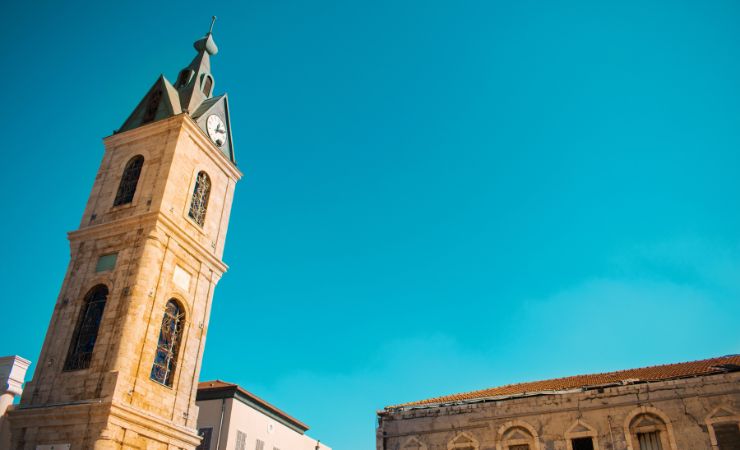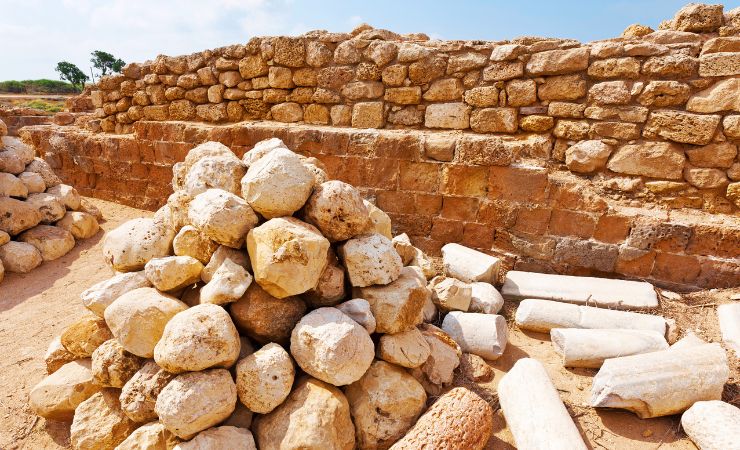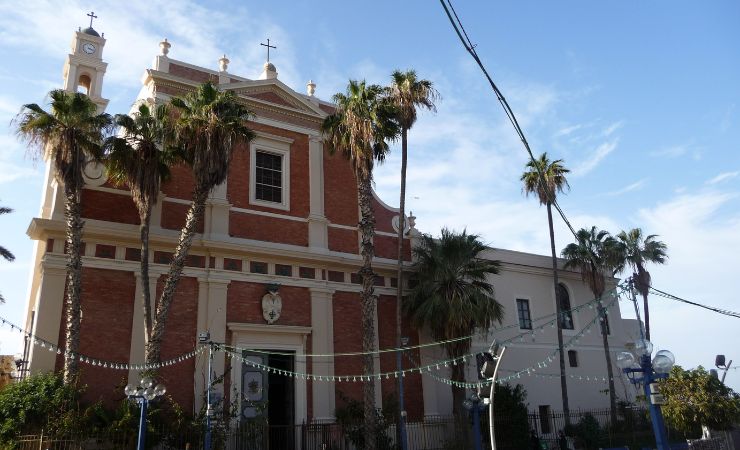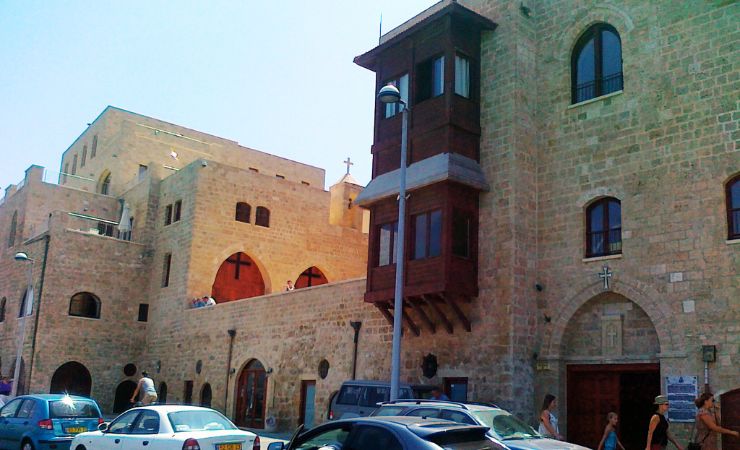The Jaffa Clock Tower: A Time and Heritage Combined
Built at the dawn of the 20th century, the Jaffa Clock Tower is an architectural gem serves as a reminder of the Ottoman Empire’s extensive influence and the locality’s transition into modernity.

Location
Situated in the heart of Jaffa, the 28 meter high Jaffa Clock Tower graces the northern end of Yefet Street, marking a significant point of interest at the Clock Square.
Background to Building the Clock Tower
The construction of the Jaffa Clock Tower, as with many of the clock towers built across the Ottoman Empire to commemorate the 25th anniversary of Sultan Abdul Hamid II’s accession, is a story that blends local initiative with imperial ambitions. The decision to erect these towers was influenced by the Sultan’s desire to modernize the empire and leave a lasting legacy, but the realization of these projects, including the one in Jaffa, often depended on local efforts and funding.
In Jaffa, the initiative to build the clock tower required significant local involvement, both in terms of administration and financing. While the Ottoman authorities may have provided the impetus for the project, it was the local community that played a crucial role in bringing it to fruition.
The funds for the Jaffa Clock Tower were raised through a combination of local donations and tax revenues. Notably, the Jewish community in Jaffa, which was quite influential at the time, contributed significantly to the funding. Among the prominent figures was Yosef Moial, a local Jewish businessman and community leader, who played a key role in the fundraising efforts. His involvement reflects the diverse and cooperative nature of Jaffa’s residents, where Muslims, Christians, and Jews lived and worked together.



The Jaffa Clock Tower's Architechture
The initiation of the Jaffa Clock Tower’s construction was marked on September 1, 1900, with a ceremonial laying of the first cornerstone. Positioned strategically at the epicenter of Jaffa’s main market square, the clock tower emerged in close proximity to significant landmarks including the Mahmoudia Mosque, the Kishla — Jaffa’s central police station and jail — and the notable Saraya House. Following the completion of its second level in 1901, construction efforts proceeded to the third floor the subsequent year, culminating in 1903 with the tower’s completion and the installation of two clocks. A notable feature of the second floor included the engraving of the Torah and Sultan Abdul Hamid II’s seal, adding a layer of historical and cultural significance to the structure.
The tower is characterized by its three-story structure, which is crowned with a distinctive multi-gabled roof, setting it apart from other clock towers built during the same era. The use of limestone in its construction is consistent with the materials commonly used in the region, providing a sense of continuity with the historical and environmental context of Jaffa. This choice of material not only contributed to the tower’s aesthetic appeal but also ensured its durability over the years.
In 1965, the Jaffa Clock Tower underwent significant restoration. Decorative bars were new clocks were installed in addition to colorful mosaic windows. These mosaics, designed by Arie Koren, depict various scenes from Jaffa’s history, adding a layer of narrative and visual interest to the tower. This restoration project not only preserved the tower’s structural integrity but also enhanced its role as a historical monument, allowing it to convey the rich history of Jaffa to visitors and locals alike.
Sources and Additional Information
Nearby Sites
- Al-Mahmoudiya Mosque: The largest mosque in Jaffa, notable for its use of ancient columns and its beautiful fountain.
- St. Peter’s Church: The Church commemorates Saint Peter’s visionary acceptance of gentiles into Christianity, showcasing New Spanish Baroque architecture.
- Simon the Tanner’s House: This house is linked to Peter’s pivotal vision, symbolizing the expansion of the early Christian Church to include all faiths
- Jaffa Flea Market (Shuk HaPishpishim): Located just south of the Clock Square, this bustling market is a treasure trove of antiques, traditional crafts, and vibrant eateries, blending the old with the new.



